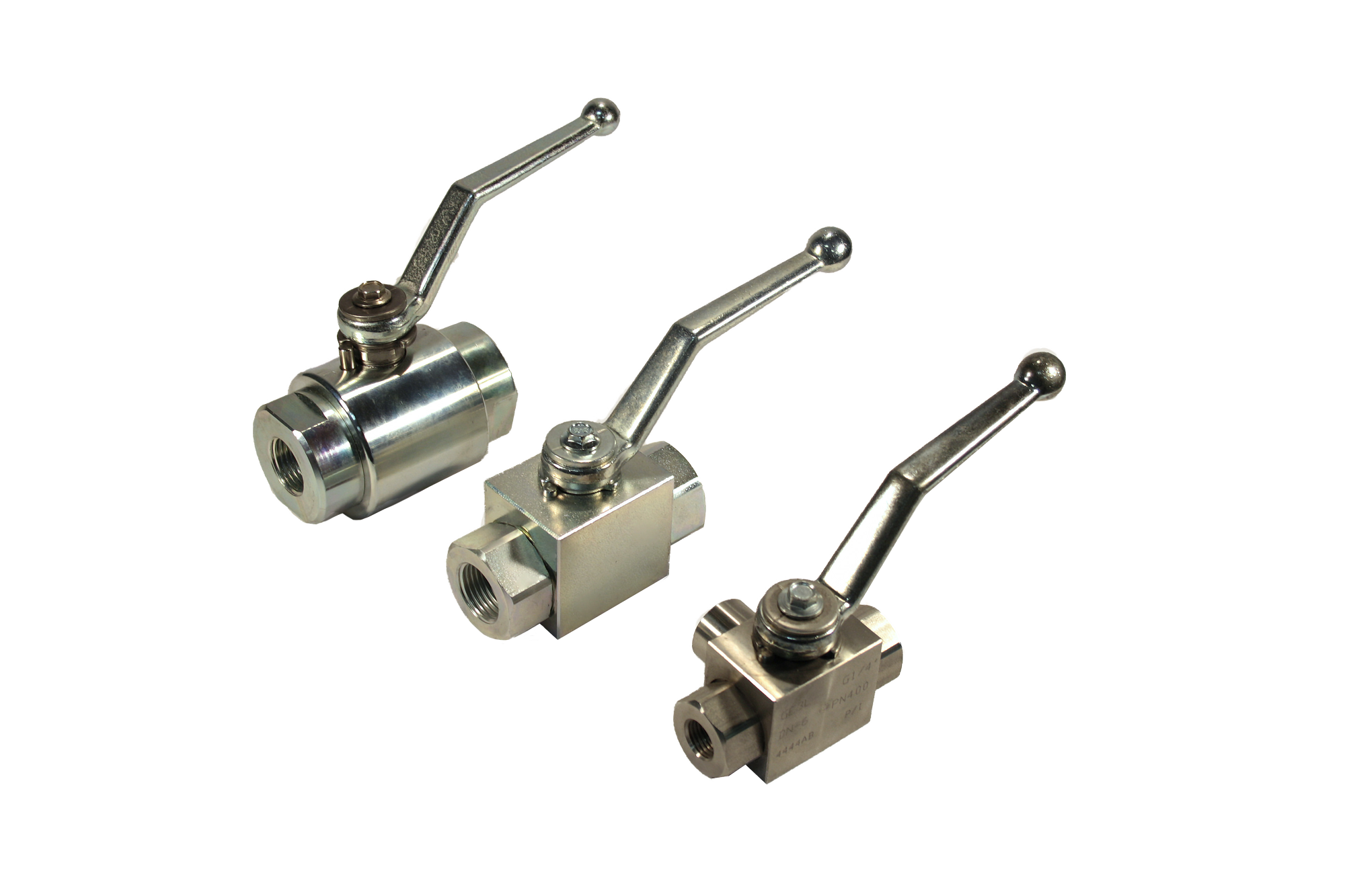Ball valve

Floating ball valves are among the most widely used quarter-turn valves for shutting off flow in piping systems. They operate with a perforated ball that rotates to either allow or block fluid passage. When the valve is open, the hole aligns with the flow path, enabling fluid to pass through; when closed, the solid side of the ball blocks the passage, stopping the flow completely.
A key advantage of floating ball valves is their ability to seal in both directions, making them ideal for applications in oil, gas, water, chemical processing, and other demanding industries.
At Redfluid, we offer two main product families designed for different pressure requirements:
We supply a wide range of valve sizes from 1/8″ to 4″, with several connection options available to suit different systems:
Choosing the right type of valve depends on your application needs. If you’re unsure whether a ball valve or a needle valve is more appropriate, we recommend checking out our in-depth blog post comparing the two: Click here to read the full article
Handling hydrogen safely requires valves designed to meet specific performance and compatibility standards. If you’re working with hydrogen applications and wondering which type of ball valve is right for you, we invite you to explore our detailed guide that breaks down the key considerations, materials, and pressure ratings: Discover the complete guide here!
Our team is here to support your project.
Write to us and we’ll help you find the right solution for your application.
Do you need more info? Here you can download the technical datasheet of this product.
For lines from 1/8 “to 4” diameter
NPT (ANSI / ASME B1.20.1), BSP or Cylindrical GAS (DIN 259), SW (ANSI B16.11); BW, SW OD, Flanged SAE, DIN, EN and ASME / ANSI all ratings and CL, Mixed.
Cryogenic series (-250ºC), Normal up to 190º and high temperature up to 450ºC with metal-metal seats.
Carbon Steel, 316 / 316L Stainless Steel, Brass, Duplex, Super Duplex, Hastelloy, Monel, Inconel, Alloy 22, Alloy 625, LF2, among others.
POM, PTFE, REINFORCED RPTFE, PEEK, TFM4215, TFM1600 METAL-METAL
NBR, FKM, EPDM, MVQ, KALREZ.
If you need other connections, materials, seats, O-rings or other modifications, we can tailor it to you. Make an inquiry here.
With so many options, it is confusing to know which valve is the best for your application. The wrong choice increases the risk of leakage, wear, or loss of control. The wrong choice costs you time, money and returns. And sometimes, all you need is a good professional to guide you through the puzzle..
If you are a supplier or an engineer, our technical resources are at your disposal. We work together to find the best solution, the right ball valve for each application, fluid, temperature, pressure, and environment.</p>
At Redfluid we have been helping warehouse operators and engineering companies with their fluid control needs for over 35 years. We look forward to assisting you.
Redfluid ball valves can be installed in any direction and be used in liquid or gas lines. They can also be used with a variety of pipe materials and come with various sealing options, and we can make them with almost any connection, standard, pressure, temperature, or body material.
A105.N – A106.B (HOT DIP GALVANISED, ELECTROPLATING).
A350: LF2, LF3, LF6.<
A694: F42, F52, F60, F65, F70.
P280GH y P245GH según EN10222-2
STAINLESS: A182 F 304/304L, 304H, 310, 316/316L, 316H, 316Ti, 317L, 347/347H, 321/321H, F20, F44, F904L.
LOW ALLOY: A182: F5, F9, F11, F22, F91.
FERRITIC – AUSTENITIC STAINLESS STEEL :
DUPLEX : F51 / F60; SUPER DUPLEX : F53/F55.
NICKEL ALLOYS:
INCONEL : 600 – 625 – 718.
INCOLLOY : 800 – 800H – 800HT – 825.
HASTELLOY: B2 – B3 – C22 – C276 – C2000.
MONEL: 200/201, 400, K500.
CARPENTER 20CB3 – ALLOY 20 – UNS N08020.
OTHERS :
TITANE : T40 Gr 2 – UNS R50400
Cu-Ni 90/10, 70/30 / Cupronickel
BRONZE
Seating: POM, PTFE, RPTFE REFORZADO, PEEK, TFM4215, TFM1600, PA612 METAL-METAL
Do you need more info?
If you wish, you can also contact us to ask for more information or place an order: